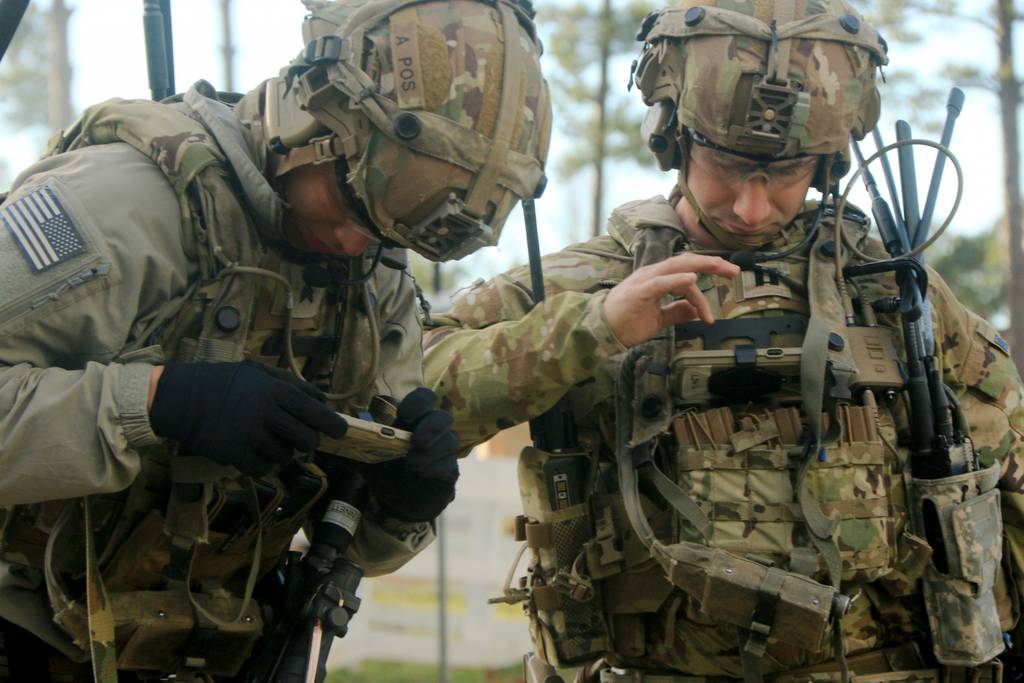WASHINGTON — The Army’s network architects have worked through a preliminary design for the service’s next set of tactical network tools and plan to brief the general overseeing network modernization early next month.
The focus of what the Army is calling Capability Set ’23 is “capacity, resiliency and convergence,” the Army Futures Command Network Cross-Functional Team chief of operations, Col. Rob Ryan said April 21 at the C4ISRNET Conference.
“What is the max amount of shared data that we can get distributed? Where are we at? And how can we best distribute what we have learned from [Capability Set] ’21 as we move to ’23? What technologies are going to mature on the vine and which aren’t? And then scalability, affordability, those are key pieces there. Resiliency, you know, as we look at this, do we have the necessary redundancy and diversity as we kind of move forward,” he added.
Ensuring a common operating picture will be critical, Ryan noted, “as you look at this with both legacy communications equipment and … as we modernize the forces, I’ve got to keep continuity with both. I’ve got to manage that because I’ve got to be able to allow commanders at every level to have that common operating picture and I have to allow systems of systems to converge so I can leverage every other battlefield warfighting function I have,” he said.
The Army held its first evaluation of its Capability Set ’21 tactical network tools at the full brigade level at the Joint Readiness Training Center evaluation at Fort Polk, Louisiana, in February.
Set ’23 will be focused on what a Stryker Brigade Combat Team will need, which is a big shift from what was needed when designing network tools for an Infantry Brigade Combat Team.
“That’s going to be different, now they’re mounted,” Col. Garth Winterle, program manager for tactical radios within the Army’s Program Executive Office for Command, Control, and Communications-Tactical, said.
The set will need to provide the right power sources and levels in Stryker vehicles and will need to work at higher speeds at greater distances for a different mission set, he said.
“We’ve really designed a lot of different test events to take that into consideration and peel apart those differences in the next year between what we learned as part of the IBCT and what we’re going to learn on the Stryker BCT,” Winterle said.
While there will be more to come on what CS ’23 will look like, some decisions that were deferred with CS ’21 will be settled for CS ’23, Winterle added.
“We’ve got some deferred basis of issue decisions on things like dismounted leader radios and where do they belong in the formation,” he said.
During the JRTC rotation, “there was a lot of discussion below platoon-level, does a team leader or squad leader really need a two-channel leader radio or can they really use a more simple, easier-to-operate and more power-efficient, single-channel radio,” Winterle said.
But a lot of the equipment that is part of CS ’21 will serve as a baseline for CS ’23, but the service will continue to assess the material solutions it is buying, Lt. Col. Brandon Baer, the PEO C3T product manager, said, in order to ensure the Army is getting the best value and best capability.
For example, multiple vendors are capable of delivering a single-channel radio out there and so after the Army bought its first lot, it put out a request for information to industry to see what else was available, Baer said.
The service is preparing for a final down-select and an award to procure another lot of radios to field in fiscal 2022.
Jen Judson is an award-winning journalist covering land warfare for Defense News. She has also worked for Politico and Inside Defense. She holds a Master of Science degree in journalism from Boston University and a Bachelor of Arts degree from Kenyon College.








